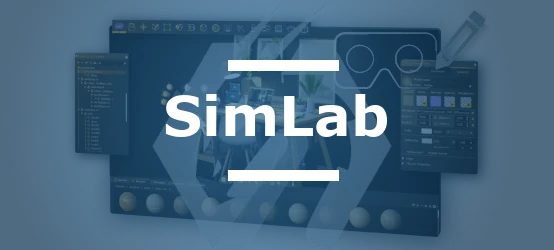Technical guide to solving interoperability issues
Interopérabilité CAO
Conversion données 3D
Visualisation immersive
Table of contents
Introduction to the challenges of 3D point cloud interoperability
The explosion of 3D scanning technologies in manufacturing has generated a proliferation of point cloud file formats, creating major interoperability challenges between CAD systems. Companies face the need to process data from multiple sources—terrestrial laser scanners, mobile lidar systems, photogrammetric sensors—each generating its own proprietary formats.
Current technical challenges
Implementation variations between manufacturers, metadata loss during conversions, and encoding issues are the three main sources of friction in point cloud interoperability workflows.
This fragmentation directly impacts technical productivity, lengthening processing cycles and generating significant hidden costs. Engineering teams spend a disproportionate amount of time on conversion and validation tasks, to the detriment of high-value analysis and design activities.
Overview of formats by data structure
ASCII text formats
- XYZ: Minimalist structure and variations
- OBJ: Geometric versatility
- PTX (Leica): Industry-specific features
- ASC: Topographic standard
Optimized binary formats
- LAS: Lidar and geomatics reference
- PCD: Point Cloud Library ecosystem
- FLS (Faro): Hardware-software integration
The fundamental distinction between ASCII and binary formats largely determines performance and functional capabilities. ASCII formats favor accessibility and universal compatibility, while binary formats optimize file size and processing times for large datasets.
ASCII formats: accessibility and limitations
The XYZ format represents the purest approach to storing three-dimensional coordinates. Its simple structure—one line per point with X, Y, Z coordinates separated by spaces or tabs—makes it a preferred choice for quick exchanges and prototyping. This simplicity is both its main strength and weakness.
| Format | File size | Metadata | CAD compatibility |
|---|---|---|---|
| XYZ ASCII | High | Limited | Universal |
| OBJ | Medium | Extended | Excellent |
| PTX | High | Specialized | Limited |
ASCII limitations
- Large file sizes
- High read times
- Loss of numerical precision
The OBJ format offers remarkable versatility by supporting not only point coordinates, but also surface normals, texture coordinates, and material information. This functional richness explains its massive adoption in the 3D modeling ecosystem, especially for integration with traditional CAD software.
Binary formats: performance and rich metadata
The LAS format stands as the industry reference for lidar data thanks to its open specification maintained by the ASPRS (American Society for Photogrammetry and Remote Sensing). Its compact binary structure efficiently stores coordinates, return intensity, RGB values, and point classifications according to recognized industry standards.
Comparative performance of binary formats
LAS
PCD
FLS
Proprietary binary formats like FLS (Faro) or PTG (Leica) incorporate optimizations specific to their respective scanner manufacturers. This approach ensures maximum preservation of native data and optimal performance, but at the cost of dependence on proprietary software ecosystems.
Universal interoperability standards
PLY format
Versatility and robustness- ASCII and binary capabilities
- Extended metadata support
- CAD ecosystem adoption
E57 format
ASTM E2807 industrial standard- ASTM E2807 standardization
- Management of complex metadata
- Multi-vendor compatibility
FBX format
3D workflow integration- Versatility for geometric data
- Immersive environment integration
- Animation and texture support
E57 format: reference industrial standard
Developed under the auspices of the ASTM E57 committee and formalized in the ASTM E2807 standard, the E57 format represents the culmination of standardization efforts in the field of point clouds. Its hybrid XML-binary structure combines the descriptive flexibility of XML for metadata and the efficiency of binary for large data.
E57 Version 2.0 innovation
The E57 Version 2.0 initiative, currently in development, aims to natively integrate mesh support, better BIM/IFC integration, and advanced compression mechanisms for progressive display.
How to choose the right format for the CAD workflow
Selecting the optimal format depends on three critical factors: the volume of data to be processed, metadata requirements, and compatibility with the existing software ecosystem. A methodical analysis of these parameters guides the choice best suited to operational constraints.
Technical decision criteria
- Data volume
- Metadata richness
- Software compatibility
Recommendation matrix
| Context | Recommended format |
|---|---|
| Quick exchange | |
| Long-term archiving | |
| Immersive visualization | |
| Geospatial analysis |
For projects requiring immersive visualization, the FBX format offers a decisive advantage with its native support for animations, textures, and materials. This functional richness is particularly relevant for virtual reality training applications or interactive client presentations.
Concrete industrial use cases
Quality inspection workflow
An aerospace equipment supplier implemented a quality inspection workflow based on laser scanning of critical parts. Data acquired in native PTX (Leica) format is converted to E57 for archiving and to PLY for comparative analysis in CAD software.
- Challenge: Preservation of micrometric precision
- Solution: Optimized E57 → PLY pipeline
- Result: 60% reduction in validation time
Virtual reality integration
An engineering company developed an immersive training system using point clouds of industrial facilities. Conversion from XYZ to FBX via SimLab enables direct integration into Unity VR environments.
- Challenge: VR performance optimization
- Solution: Simplified XYZ → FBX pipeline
- Result: Stable 90 FPS experiences
These industrial implementations demonstrate the crucial importance of a format strategy adapted to operational constraints. Technical selection cannot be limited to performance alone, but must integrate traceability, archiving, and solution scalability aspects.
Best practices and recommendations
Workflow optimization strategies
Developing a coherent interoperability strategy requires a systemic approach integrating internal standardization, quality validation, and process documentation. This methodology ensures the reproducibility and traceability of conversion operations.
- Internal format standardization
Define a pivot format for internal exchanges (recommendation: E57)
- Post-conversion quality validation
Implement automatic geometric consistency checks
- Interoperability process documentation
Maintain an up-to-date compatibility matrix
Key recommendations
- Favor E57 for archiving
- Use PLY for CAD analysis
- Reserve FBX for visualization
- Systematically validate conversions
Technological evolutions and outlook
The move towards next-generation formats such as E57 Version 2.0 and the progressive integration of IFC standards for architectural scan data open up new interoperability prospects. These developments anticipate growing needs for interactive visualization and cloud exploitation of large datasets.


